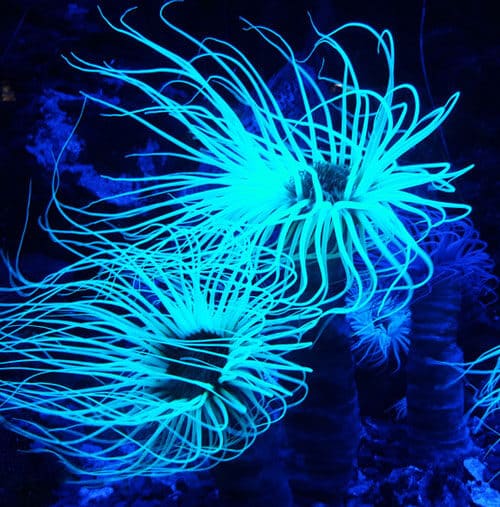Dive into the Neon Underworld: UV Night Snorkeling and Diving in Koh Tao
Updated for 2024
Craving an adventure that goes beyond the ordinary? Have you ever considered UV night snorkeling or diving? Koh Tao, renowned as a diver’s haven, goes beyond its famed 300 days of sunshine and pristine beaches. Equipped with a special UV touch and personalized mask filters, these underwater excursions promise an experience like no other. Let’s explore the essentials, venture into the unique marine life, and dive deep into the fascinating phenomenon of biofluorescence. If you seek a new adventure or something beyond the ordinary, join me as we explore this incredible experience together.
UV Night Diving in Koh Tao: Requirements and Preparations:
Biofluorescence: The Hidden Glow of Marine Life:
Biofluorescence is a captivating phenomenon in marine environments, involves living organisms, such as corals, jellyfish, anemones, and certain fish, absorbing light at one wavelength and emitting it at a longer, vibrant wavelength. This display is particularly striking during UV night diving and snorkeling in places like Koh Tao’s crystal-clear waters. The ocean comes alive with neon brilliance as marine life, including corals, fish, sharks, eels, and critically endangered Hawksbill sea turtles, illuminates in response to UV light. Over 180 fish species actively contribute to this radiant spectacle, unveiling a previously unseen underwater wonder.
Beyond its visual appeal, biofluorescence deepens our understanding of marine life by offering insights into the intricate interactions within their habitat. This phenomenon transforms the ocean’s depths into a visually spectacular canvas of neon hues, enhancing our appreciation for the hidden wonders of the underwater world.
Numerous marine organisms showcase biofluorescence, contributing to the vibrant colors seen in coral reefs. Sea anemones create visually striking effects with varying emitted colors, while fish species like parrotfish and angelfish display fluorescent patterns for communication and attracting prey. Mollusks, including certain nudibranchs, exhibit biofluorescence, potentially playing a role in their communication and mating behaviors. Sharks and rays also demonstrate biofluorescence, with emitted colors potentially involved in communication or camouflage within their underwater habitats.
Distinguishing Bioluminescence and Fluorescence:
Bioluminescence: Bioluminescence, a captivating natural phenomenon, involves living organisms producing light through a chemical reaction. Fireflies, certain jellyfish, bacteria, and fungi are examples of organisms with this enchanting ability. Unlike fluorescence, bioluminescence is independent of external light sources; it occurs as a result of the organism’s metabolic processes. Witnessing the magical glow of fireflies on a dark night offers a direct connection to the inherent beauty of the natural world. The accessibility of bioluminescence without the need for equipment enhances its wonder, making it a captivating experience visible to the naked eye. (see photo below as an example of bioluminescence)
Fluorescence: Fluorescence, on the other hand, is a process where a substance absorbs light at one wavelength and re-emits it at a longer wavelength. This phenomenon occurs in both living and non-living things. In the context of using UV light, fluorescent materials absorb ultraviolet (UV) light and then emit visible light. In marine environments, certain organisms possess fluorescent proteins or pigments that absorb UV light and re-emit it as visible light, creating vibrant and often colorful displays. Unlike bioluminescence, fluorescence typically requires an external light source, such as UV light, to trigger the emission of light.
In summary, bioluminescence is a natural chemical reaction in living organisms that produces light without external stimulation, while fluorescence involves the absorption of light by a substance, resulting in the emission of light at a different wavelength. In the context of UV light, fluorescence requires an external UV light source, whereas bioluminescence does not.
Koh Tao’s UV night snorkeling and diving experiences invite you to step into an underwater realm where neon colors and bioluminescence paint the ocean canvas. With the island’s crystal-clear waters and a diversity of marine life, the journey into the UV-lit abyss becomes an unforgettable adventure. So, gear up, meet the requirements, and explore the hidden glow of Koh Tao’s UV night world—it’s a dive into the unknown, a dive into pure magic.
Author: Jazmine Garrett





